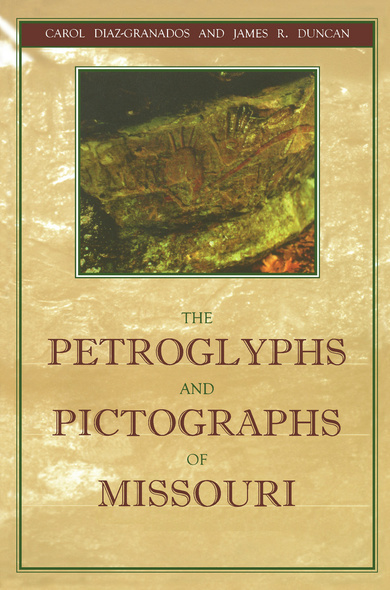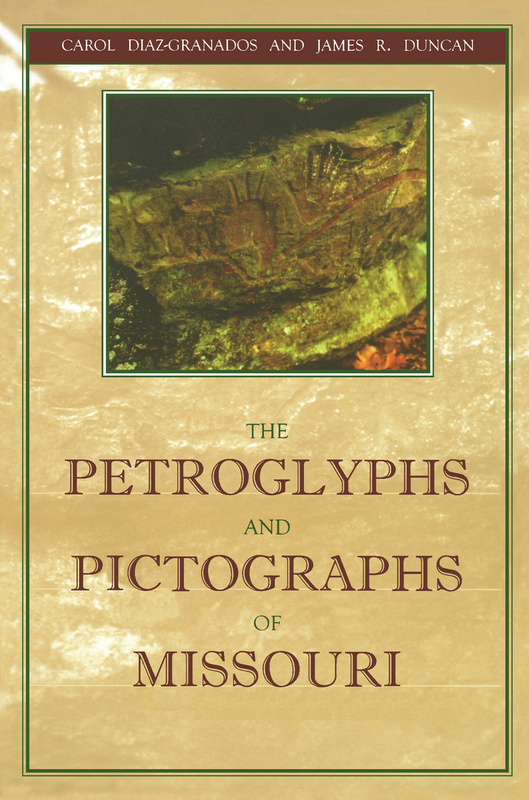The Petroglyphs and Pictographs of Missouri
Images on rocks depicting birds, serpents, deer, and other designs are haunting reminders of prehistoric peoples. This book documents Missouri's rich array of petroglyphs and pictographs, analyzing the many aspects of these rock carvings and paintings to show how such representations of ritual activities can enhance our understanding of Native American culture.
Missouri is a particularly important site for rock art because it straddles the Plains, the Ozarks, and the Southeast. Carol Diaz-Granados and James Duncan have established a model for analyzing this rock art as archaeological data and have mapped the patterning of fifty-eight major motifs across the state. Of particular importance is their analysis of motifs from Mississippi River Valley sites, including Cahokia.The authors include interpretive discussions on iconography and ideology, drawing on years of research in the ethnographic records and literature of Native Americans linguistically related to earlier peoples. Their distribution maps show how motifs provide clues to patterns of movement among prehistoric peoples and to the range of belief systems. Rock art is an aspect of the archaeological record that has received little attention, and the art is particularly subject to the ravages of time. By documenting these fragile images, this book makes a major contribution to rock art research in North America.
Readers will gain an understanding of the importance of the environment, the cultures, and the choice of geographic locations for the placement of these icons produced by the First Americans.' —CHOICE
What commends this study is its systematic approach to the recording, presentation, and interpretations of rock graphics of all kinds in a state that straddles the Prairie-Plains and the Mississippi River bottoms. Particularly appealing to archaeologists is the relationship it shows between Mississippian cultural connections with Cahokia.' --James A. Brown, Northwestern University
Offers a solid model for recordation, analysis, and interpretation of an important category of artifact. Focusing on the prehistoric rock art of Missouri, this survey is comprehensive, and sets a high standard for both the identification of styles and for the interpretation of specific motifs and combinations of motifs . . . the study of rock art has come of age in the 21st century. This book is certainly a significant factor (and milestone) in that development.' --Southeastern Archaeology
Carol Diaz-Granados is Research Associate and Lecturer at Washington University in Saint Louis and is also coeditor with James Duncan of The Rock-Art of Eastern North America: Capturing Images and Insight.





